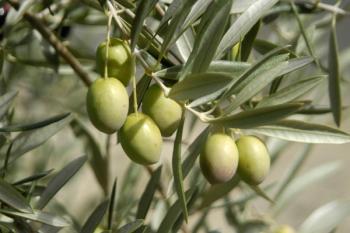
- Nutritional Outlook Vol. 17 No. 8
- Volume 17
- Issue 8
Dietary Supplements for Postmenopausal Osteoporosis
A rundown on the latest research
Maintaining healthy bone density with increasing age is a significant health challenge. Centers for Disease Control and Prevention (CDC) estimates suggest that 9% of U.S. adults over the age of 50 have osteoporosis (per World Health Organization criteria), while nearly half of all adults 50 and older have decreased bone mass.1 Osteoporosis affects both men and women alike; however, the prevalence is substantially higher in women. The same CDC report estimates that 16% of women have osteoporosis, while 4% of men qualify for this diagnosis. In addition, up to 61% of women aged 50 and older in the United States have decreased bone mass.
Hormonal changes occurring with age as a result of menopause contribute significantly to low bone mass in women. Specifically, decreased levels of estrogen after menopause cause declines in levels of osteoprotegerin (a protein secreted by osteoblasts, the cells responsible for bone building). Osteoprotegerin antagonizes the process of bone resorption (breakdown) that is mediated by osteoclasts (cells responsible for bone breakdown).
Normally, estrogen, when present at premenopausal levels, stimulates the production of bone-building osteoprotegerin, enhancing bone structural density. With menopausal changes and associated reductions in estrogen, however, osteoclast activity is increased, leading to decreased bone mass and, in many cases, postmenopausal osteoporosis in women. Ultimately, this leads to lowered bone mineral density and changes in bone structure, resulting in reduced bone strength and increased risk of fractures.2
Lifestyle Strategies for Optimal Bone Density
Menopause-related changes in estrogen levels begin occurring 2–3 years prior to the last menstrual cycle in women, initiating bone loss. The accelerated rate of bone loss continues through menopause for up to 5–10 years. Evidence also suggests that even the lower levels of estrogen in postmenopausal women confer some protection against further acceleration of bone loss by preserving levels of osteoblast activity.2 Given the prolonged period of bone loss occurring around menopause, however, it becomes more prudent to take measures earlier in life to compensate for this inevitable decrease in bone mineral density.
Peak bone mass is achieved during the third decade of life. While genetic factors have a large influence, modifiable lifestyle and nutritional factors play significant roles in this process.
Physical exercise programs, including strength training, resistance exercise, and balance and coordination activities, can help maintain or increase bone mineral density in the spine and the hip and have been shown to decrease the risk of falls in individuals with osteoporosis. Furthermore, it seems that a combination of high-intensity training such as jogging or running, along with other weight-bearing activity, may be most effective for supporting bone mineral density both at the lumbar spine and hip.3 Elisa Marques and colleagues from the University of Porto in Portugal conducted a study to compare the effects of resistance exercise and aerobic exercise on bone mineral density and physical function in older women.4 They found that, over an eight-month period, the resistance-exercise protocol induced significant benefits in bone mineral density at the hip and overall muscle composition as well as improved overall functional balance. Aerobic exercise over the same time frame improved functional balance but had no favorable effects on bone mineral density.
Beyond physical activity, nutritional choices are crucial for preserving bone mineral density in postmenopausal women. An inadequate intake of food, specifically in the form of decreased protein intake, contributes to decreased bone mass and a reduction in skeletal muscle mass. Researchers from the University of São Paulo in Brazil studied the differences in protein intake in elderly women over the age of 65 with or without sarcopenia (age-related loss of muscle mass) to evaluate the intake level of protein related to improved bone mineral density and muscle mass.5 The investigators found that women consuming more than 1.2 g of protein/kg body weight daily had significantly higher muscle, bone, and fat mass than those consuming less protein on a daily basis, indicating that increased protein intake had positive impacts on bone density and muscle composition.
In another study, researchers at the University of Connecticut’s (Farmington, CT) Anne Kenny, MD, Center on Aging found that increased protein intake in postmenopausal women aged 60–90 years was associated with enhanced physical performance in both the upper and lower extremity compared to those women consuming lower-protein diets (less than 0.8 g/kg body weight daily).6 The average protein intake of this group was 1.1 g /kg body weight per day.
Of course, no discussion on preventive strategies for osteoporosis can be complete without highlighting the importance of calcium and vitamin D intake, both of which are often low in postmenopausal women. Vitamin D regulates calcium balance. Low intake levels of calcium and vitamin D can induce increased levels of parathyroid hormone, leading to increased bone resorption and an increased risk of fractures.2 Research suggests that up to 50% of women with osteoporosis may have vitamin D insufficiency.
In a recent review, researchers comprising members of the European Society for Clinical and Economic Aspects of Osteoporosis and Osteoarthritis (ESCEO) recommended that the minimum threshold for vitamin D sufficiency for bone health is a serum 25-hydroxy vitamin D concentration of 20 ng/mL. Below this serum level, ESCEO advises supplementation with vitamin D. Research has shown that levels of parathyroid hormone and markers of bone turnover are significantly lower in individuals with vitamin D levels above the 20 ng/mL threshold as opposed to individuals with levels below this mark.7 Dietary intake of calcium-rich foods should be increased, and supplemental forms of calcium can be considered to maintain adequate intake. Sun exposure results in the majority of vitamin D production in the body. Failing adequate sun exposure, supplements are a prudent choice to ensure sufficient vitamin D intake.
Nutritional Alternatives for Osteoporosis
Standard pharmaceutical approaches to the treatment of osteoporosis include hormone-replacement therapy (HRT) (to replace reduced levels of estrogen), selective estrogen receptor modulators (drugs that bind to the estrogen receptor with high affinity), and bisphosphonates, a class of drugs that includes Fosamax (alendronate). While effective at increasing bone mineral density and inhibiting bone breakdown, these therapies often have unacceptable side-effect profiles and contraindications.2 For these reasons, nutritional and more natural alternatives for osteoporosis prevention are appealing.
Genistein
Genistein is an isoflavone most often derived from soy that has phytoestrogenic effects. Asian women with a high soy intake have been found to have a decreased risk of osteoporosis. Phytoestrogens are plant-derived compounds that have weak estrogen-like effects, as they are able to bind to estrogen receptors. Because of the affinity for estrogen receptors, and the concern regarding side effects associated with estrogen-replacement therapy, genistein is a viable option for counteracting the menopausal loss of estrogen and alleviating menopausal symptoms.
The safety of genistein was assessed in a three-year study consisting of daily supplementation with 54 mg daily. Genistein showed no significant changes in mammographic breast density measurements or in endometrial thickness, indicating a promising safety profile.8
Marco Atteritano and colleagues from the University of Messina in Italy evaluated the bone health benefits associated with the intake of a genistein-containing supplement (54 mg/day) or placebo after a 1- and 2-year treatment in 138 postmenopausal women with decreased bone mineral density.9 Researchers found that the genistein supplement significantly increased bone mineral density in the femur and lumbar spine. In addition, quantitative ultrasound parameters (used to evaluate fracture risk and bone architecture and elasticity) showed significant improvements with genistein supplementation.
A more recent randomized placebo-controlled pilot study was conducted by Joan Lappe and colleagues from Creighton University to evaluate a combination supplement containing genistein, the polyunsaturated omega-3 fatty acids EPA and DHA, and vitamins D3 and K1 on bone mineral density in postmenopausal women.10 The study duration was six months, with a daily dose of the supplement providing 30 mg of synthetically derived genistein (geniVida; DSM Nutritional Products; Parsippany, NJ). The women in the group supplementing with the genistein blend maintained bone mineral density assessed at the femoral neck, while the placebo group showed significant decreases in bone mineral density. Assessed at Ward’s triangle (a specific fracture-prone area of the femur), the genistein group showed an average increase in bone mineral density of 2.3%, whereas the placebo group declined by 1.1% on average. These studies indicate the ability of genistein to support and enhance bone mineral density as well as several parameters of healthy bone architecture.
KoACT Calcium–Collagen Complex
Bone is composed of a combination of proteins and minerals, with approximately 70% of the weight deriving from calcium, phosphate, and other minerals. The remainder of the composition includes water and matrix proteins. Nearly 90% of this matrix is composed of collagen, which contributes significantly to bone strength.11
While calcium and other minerals are critical for bone structure, a more complete strategy for optimal bone strength may be to provide minerals in combination with collagen to support the bone tissue matrix. Designed to provide a combination of nutrients essential to bone tissue, KoACT (AIDP; City of Industry, CA) is a patented chelated (bonded) compound of calcium and collagen that was developed with this strategy in mind.
Behram Arjmandi from Florida State University and colleagues conducted a 12-month pilot clinical trial to evaluate the benefits of KoACT calcium–collagen chelate in postmenopausal women with decreased bone density.12 Thirty-nine women were assigned to receive either 5 g of the calcium–collagen chelate daily containing 500 mg of elemental calcium and 200 IU vitamin D in a collagen matrix (treatment group), or simply 500 mg of calcium along with 200 IU vitamin D (control). Evaluations included total body bone mineral density and bone mineral density assessments at the hip and spine. Serum markers of bone turnover were also measured at baseline, 6, and 12 months.
Serum markers of bone turnover were significantly more favorable at six months in the treatment group compared to the control, while the calcium–collagen chelate also significantly prevented the loss of whole-body bone mineral density versus the control treatment after 12 months. These promising results indicated the superiority of the calcium–collagen complex compared to calcium alone in supporting bone mineral density in postmenopausal women.
Vitamin K2
Vitamin K2 is an umbrella term for a number of related compounds known as menaquinones. Menaquinones have various numbers of isoprenoid units attached to their core, which reflects the length of their side chain and contributes to their name designation. Two of the more commonly available forms of vitamin K2 for supplementation purposes include MK-4 (four isoprenoid units in the side chain) and MK-7 (seven isoprenoid units).
Vitamin K2 plays a crucial role in maintaining bone health via its ability to activate osteocalcin, a calcium-binding protein found in the bloodstream that takes calcium out of circulation and delivers it to bone matrix. Research has found that circulating osteocalcin is a measure of bone formation.13
However, menaquinones may have additional unique benefits for bone health. Emory University’s Masayoshi Yamaguchi, PhD, and M. Neale Weitzmann, PhD, demonstrated that menaquinones facilitate both pro-anabolic and anti-catabolic effects on bone cells.14 Menaquinones were shown to suppress the activation of NF-kB, a signaling molecule that mediates the inflammatory process. By suppressing this molecule, menaquinones stimulated the production of osteoblasts while suppressing the production of osteoclasts.
Human studies on vitamin K2 both in the form of MK-4 and MK-7 support the bone health benefits of this vitamin. In a recently published three-year study, Martinus Knapen and colleagues from the Netherlands assessed the benefits of 180 mcg daily of MK-7 versus a placebo on maintenance of bone mineral density and bone strength in healthy postmenopausal women.15 MK-7 supplementation was found to significantly slow the age-related decline in bone mineral content and bone mineral density assessed at the lumbar spine and neck of the femur, while also increasing bone strength. Furthermore, MK-7 supplementation was significantly associated with less loss of vertebral height in the mid-back region. These findings suggest that MK-7 significantly impacts bone density and strength in postmenopausal women.
The menaquinone MK-4 (a shorter-chain form of vitamin K2) has also been well studied for its ability to support bone health, generally in doses up to 45 mg/day. A recent study by Noriko Koitaya and colleagues from the National Institute of Health and Nutrition in Tokyo investigated whether a much lower dose of MK-4 (1.5 mg/day) would have similar benefits for bone health in postmenopausal women aged 50–65.16 Participants were divided into a placebo and treatment arm and treated for 12 months. Serum uncarboxylated osteocalcin concentrations were assessed at baseline and found to be elevated in both groups. At both 6 and 12 months, serum concentrations of uncarboxylated osteocalcin were significantly lower in the MK-4 group compared to placebo, indicating significant improvement in the activity of this calcium-transport protein. After 12 months, the group supplementing with MK-4 showed no decrease, while the placebo group showed a significant decline in bone mineral density assessed at the forearm, suggesting that even a low dose of MK-4 taken long-term is beneficial.
Age-related changes in bone density are a significant challenge for postmenopausal women, and the consequences can often be dire. The key to lifelong healthy bones is ensuring optimal nutritional practices are stressed at an early age and continued through menopause and beyond. Enhancing pre- and postmenopausal nutrient intake by adding targeted supplemental nutrients-calcium, vitamin D, vitamin K2, genistein, and collagen chief considerations among them-can help create a solid foundation for bone building and maintenance.
References
- Looker AC et al., “Osteoporosis or low bone mass at the femur neck or lumbar spine in older adults: United States, 2005–2008,” NCHS data brief no 93. Hyattsville, MD: National Center for Health Statistics. 2012.
- Maeda SS et al., “An overview on the treatment of postmenopausal osteoporosis,” Arquivos Brasileiros de Endocrinologia e Metabologia, vol. 58, no. 2 (March 2014): 162–171
- Lirani-Galvão AP et al., “Physical approach for prevention and treatment of osteoporosis,” Arquivos Brasileiros de Endocrinologia e Metabologia, vol. 54, no. 2 (March 2010): 171–178
- Marques EA et al., “Effects of resistance and aerobic exercise on physical function, bone mineral density, OPG and RANKL in older women,” Experimental Gerontology, vol. 46, no. 7 (July 2011): 524–532
- Genaro PD et al., “Dietary protein intake in elderly women: Association with muscle and bone mass,” Nutrition in Clinical Practice. Published online ahead of print August 8, 2014
- Gregorio L et al., “Adequate dietary protein is associated with better physical performance among post-menopausal women 60-90 years,” The Journal of Nutrition, Health & Aging, vol. 18, no. 2 (2014): 155–160
- Rizzoli R et al., “Vitamin D supplementation in elderly or postmenopausal women: a 2013 update of the 2008 recommendations from the European Society for Clinical and Economic Aspects of Osteoporosis and Osteoarthritis (ESCEO),” Current Medical Research and Opinion, vol. 29, no. 4 (April 2013): 305–313
- Marini H et al., “Breast safety and efficacy of genistein aglycone for postmenopausal bone loss: a follow-up study,” The Journal of Clinical Endocrinology and Metabolism, vol. 93, no. 12 (December 2008): 4787–4796
- Atteritano M et al., “Genistein effects on quantitative ultrasound parameters and bone mineral density in osteopenic postmenopausal women,” Osteoporosis International, vol. 20, no. 11 (November 2009): 1947–1954
- Lappe J et al., “Effect of a combination of genistein, polyunsaturated fatty acids and vitamins D3 and K1 on bone mineral density in postmenopausal women: a randomized, placebo-controlled, double-blind pilot study,” European Journal of Nutrition, vol. 52, no. 1 (February 2013): 203–215
- Young MF, “Bone matrix proteins: their function, regulation, and relationship to osteoporosis,” Osteoporosis International, vol. 14, suppl. 3 (2013): S35–542
- Arjmandi J et al., “A calcium–collagen chelate dietary supplement prevents bone loss in postmenopausal women with osteopenia,” The Journal of the Federation of American Societies for Experimental Biology, vol. 28, no. 1 (April 2014) suppl. LB421
- Booth SL et al., “The role of osteocalcin in human glucose metabolism: marker or mediator?” Nature Reviews. Endocrinology, vol. 9, no. 1 (January 2013): 43–55
- Yamaguchi M et al., “Vitamin K2 stimulates osteoblastogenesis and suppresses osteoclastogenesis by suppressing NF-kB activation,” International Journal of Molecular Medicine, vol. 27, no. 1 (January 2011): 3-14
- Knapen MH et al., “Three-year low-dose menaquinone-7 supplementation helps decrease bone loss in healthy postmenopausal women,” Osteoporosis International, vol. 24, no. 9 (September 2013): 2499–2507
- Koitaya N et al., “Low-dose vitamin K2 (MK-4) supplementation for 12 months improves bone metabolism and prevents forearm bone loss in postmenopausal Japanese women,” Journal of Bone and Mineral Metabolism, vol. 32, no. 2 (March 2014): 142-150
Photo © iStockphoto.com/Visiofutura
Articles in this issue
about 11 years ago
Regulatory Concerns Are Shifting the Focus of Digestive Healthabout 11 years ago
Probiotics for the Skinabout 11 years ago
Prebiotic Ingredients: Nondigestible Oligosaccharidesabout 11 years ago
Natural and Healthy Pet Food Ingredientsabout 11 years ago
Brain Health Dietary Supplement Ingredient Research Updateabout 11 years ago
Can Dietary Supplements Really Help Control Allergies?about 11 years ago
Is There a Risk in Premix Overages?about 11 years ago
Ingredient Spotlight: Prickly PearNewsletter
From ingredient science to consumer trends, get the intel you need to stay competitive in the nutrition space—subscribe now to Nutritional Outlook.





